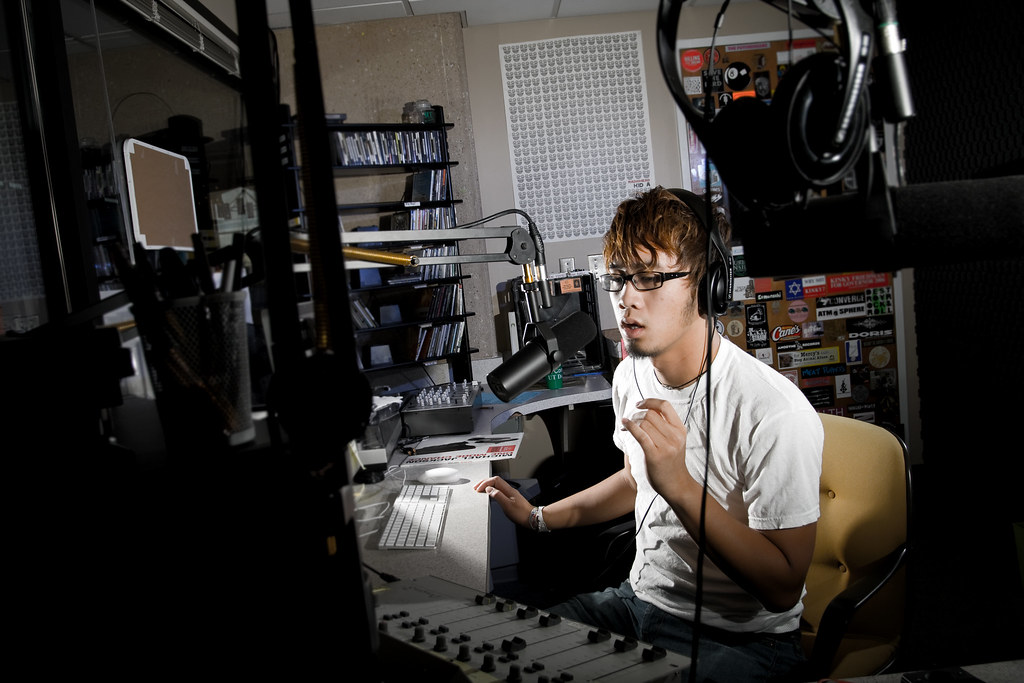Thursday, October 30, 2008
Tuesday, October 28, 2008
Shoot for Thursday
Photo shoot this Thursday at 5:00PM on campus. We will meet at the art barn then move to another location when seen fit. Anyone is welcome to join or observe.
email lpn071000@utdallas.edu for any questions.
email lpn071000@utdallas.edu for any questions.
Monday, October 27, 2008
Location Scouting
Sunday, October 26, 2008
Photos from last week
It's amazing how different pictures can look from each photographer during the same shoot. Here are a few of my images from our recent shoots:
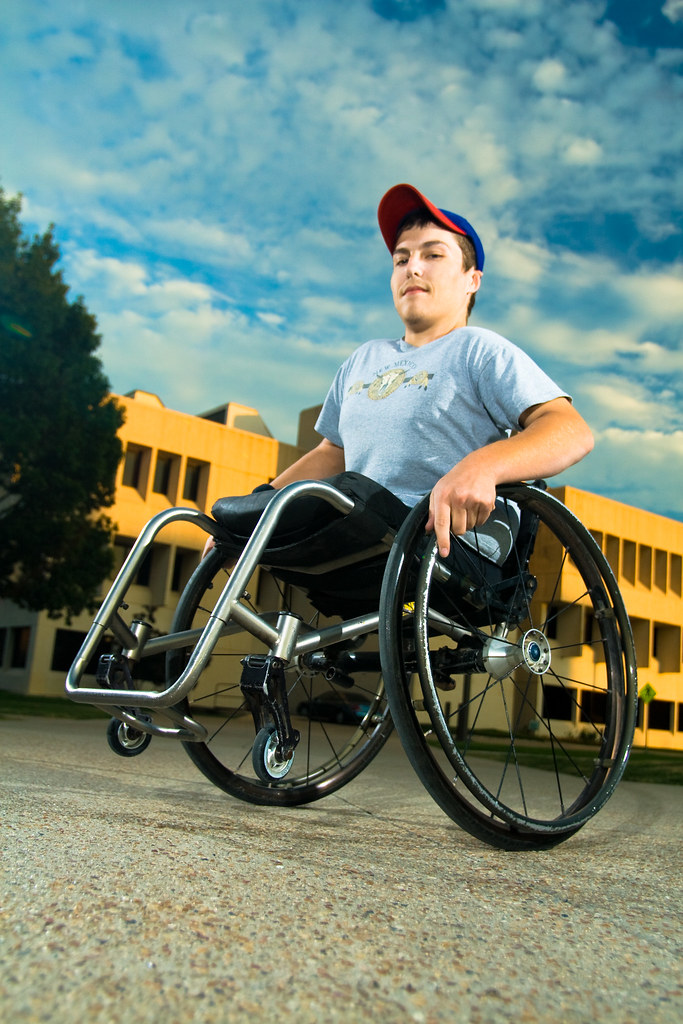 model: David Bird
model: David Bird
 Model: Annie Luong
Model: Annie Luong
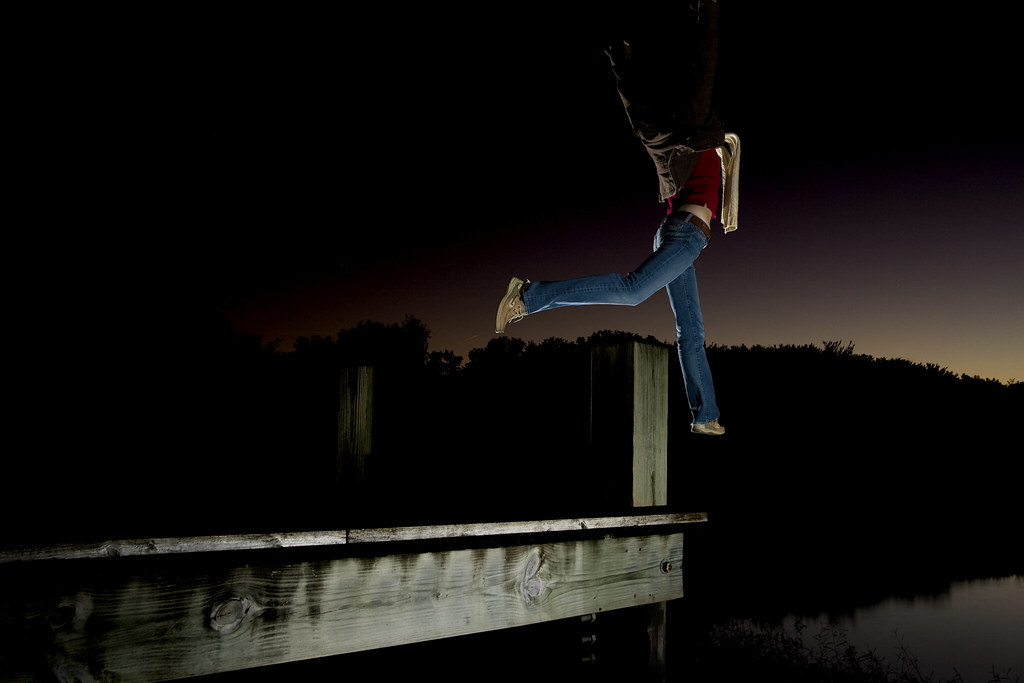 Model: Annie Luong
Model: Annie Luong
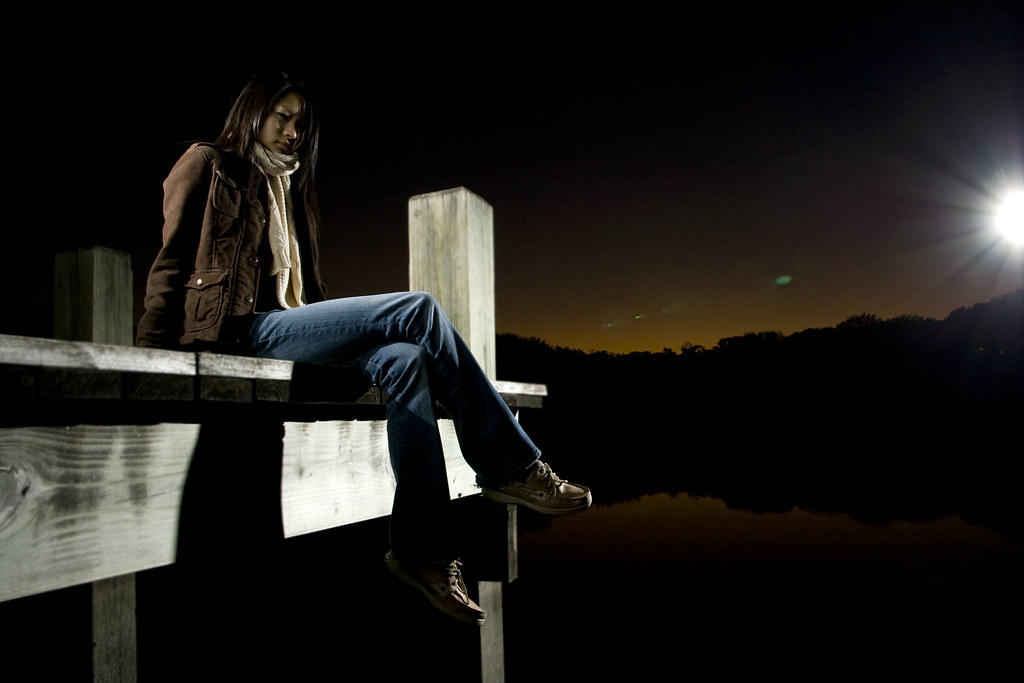 Model: Annie Luong
Model: Annie Luong
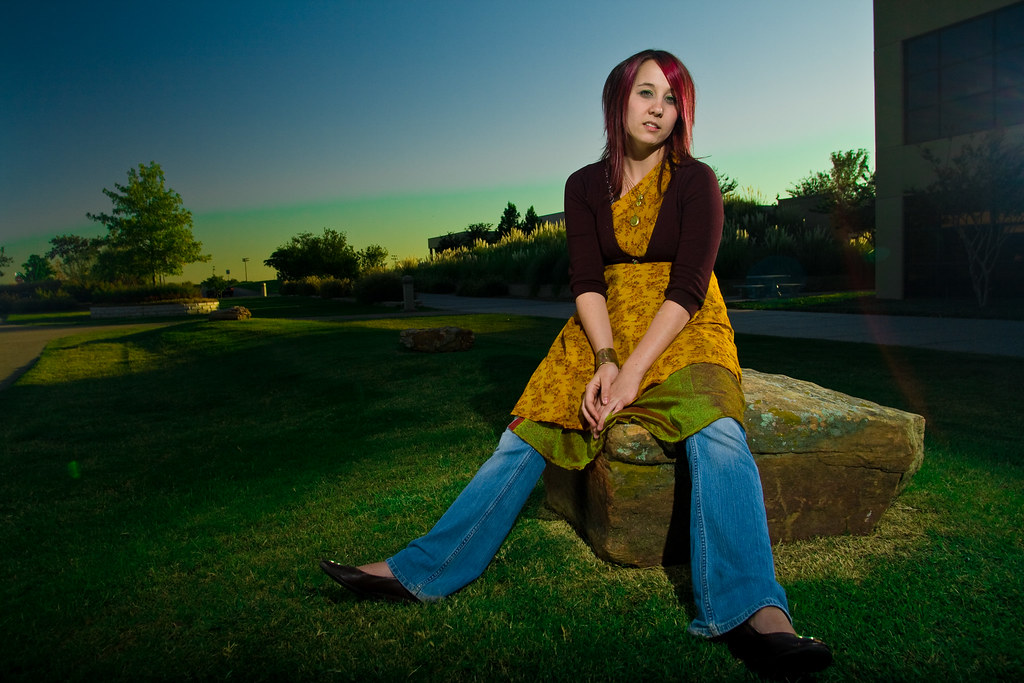 Model: Leah Foster
Model: Leah Foster
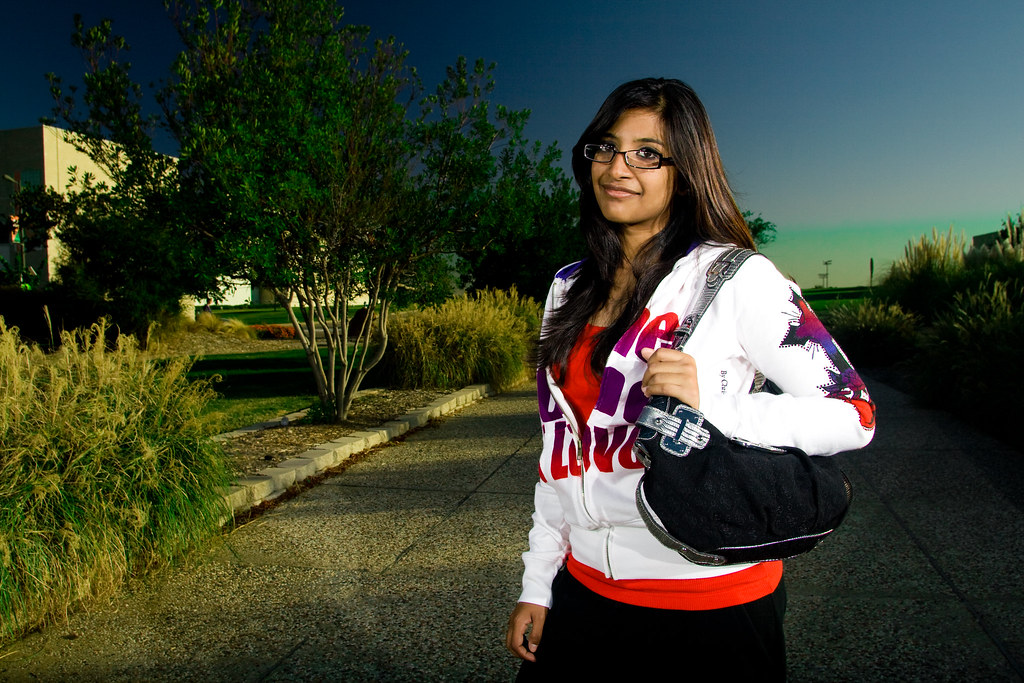 Model: Unknown (can you fill this one in for me, long?)
Model: Unknown (can you fill this one in for me, long?)
Here are the albums of UTD student photographers:
http://flickr.com/photos/hubertduong/ hubert duong
http://lphi.smugmug.com/ long nguyen
http://flickr.com/photos/nokturnull/ eugene lee
http://flickr.com/photos/31565225@N07/ daniel song
http://flickr.com/photos/leahfoster/ leah foster
we are working on getting Luong's album up.
 model: David Bird
model: David Bird Model: Annie Luong
Model: Annie Luong Model: Annie Luong
Model: Annie Luong Model: Annie Luong
Model: Annie Luong Model: Leah Foster
Model: Leah Foster Model: Unknown (can you fill this one in for me, long?)
Model: Unknown (can you fill this one in for me, long?)Here are the albums of UTD student photographers:
http://flickr.com/photos/hubertduong/ hubert duong
http://lphi.smugmug.com/ long nguyen
http://flickr.com/photos/nokturnull/ eugene lee
http://flickr.com/photos/31565225@N07/ daniel song
http://flickr.com/photos/leahfoster/ leah foster
we are working on getting Luong's album up.
Friday, October 24, 2008
Friday 24th shoot
Our biggest photo shoot yet in terms of people and models.
Expect more photos (or links) from Hubert, Daniel, Leah, and Luong.
One of the wilder goals of UTD Photo is to have the world's largest photo shoot, all to be done on campus. From web surfing, the most people I've seen doing a photo shoot at once topped at twenty people - not including seminars, those don't count as photo shoots.




Expect more photos (or links) from Hubert, Daniel, Leah, and Luong.
One of the wilder goals of UTD Photo is to have the world's largest photo shoot, all to be done on campus. From web surfing, the most people I've seen doing a photo shoot at once topped at twenty people - not including seminars, those don't count as photo shoots.




Monday, October 20, 2008
CLS/E-TTL vs Pocket Wizard (and others)
When picking a method to trigger your lights, it boils down to Radio or Infrared.
Canon E-TTL and Nikon CLS use infrared technology to transmit their camera information between flashes and body. This information contains values for light output, distance between subject and camera, and exposure settings - shutter, ISO, etc. Infrared can travel only a short distance of about 30 feet so range is limited. There are ways to extend this range by bridging flashes or by use of Radio Popper's line of products. Also, there is a line of sight associated with infrared technology, typically 30 degrees from the master flash/ camera body. When placing your flashes onto your environment, the unit's IR port must be openly visible to the master controller, otherwise the digital data for exposure cannot communicate.
This technology comes real handy to wedding photographers or photographers who need to act quickly during the shoots. E-TTL and CLS take loads off the photographer when it comes to calculating exposure; they won't have to tweak the settings to get a proper exposed shot - as defined by the camera. There is no need to physically get to each flash unit to adjust the settings because the settings can be controlled from the master flash, usually on your camera.
No other adapters or special add ons are needed to work. You only need are a flash that can act as the master unit such as the 580 EXII or SB800, and all the other flashes could be master units or slave-only units. Take note that not all Canon and Nikon flashes have the built in wireless feature. The oldies won't have this technology.
Canon E-TTL and Nikon CLS use infrared technology to transmit their camera information between flashes and body. This information contains values for light output, distance between subject and camera, and exposure settings - shutter, ISO, etc. Infrared can travel only a short distance of about 30 feet so range is limited. There are ways to extend this range by bridging flashes or by use of Radio Popper's line of products. Also, there is a line of sight associated with infrared technology, typically 30 degrees from the master flash/ camera body. When placing your flashes onto your environment, the unit's IR port must be openly visible to the master controller, otherwise the digital data for exposure cannot communicate.
This technology comes real handy to wedding photographers or photographers who need to act quickly during the shoots. E-TTL and CLS take loads off the photographer when it comes to calculating exposure; they won't have to tweak the settings to get a proper exposed shot - as defined by the camera. There is no need to physically get to each flash unit to adjust the settings because the settings can be controlled from the master flash, usually on your camera.
No other adapters or special add ons are needed to work. You only need are a flash that can act as the master unit such as the 580 EXII or SB800, and all the other flashes could be master units or slave-only units. Take note that not all Canon and Nikon flashes have the built in wireless feature. The oldies won't have this technology.
Radio sends signals from all around. They can pass through objects and walls although the range will weaken. Companies that produce these radio triggers (in order of pricetag) are: Pocket Wizard, AlienBees CyberSync, and soon to be Radio Popper with their Jr. line. Radios have proven to have longer ranges, PWs having to have a range of 1600ft.
So far, these manufacturers have made their triggers to transmit only the 'fire flash' signal meaning that no automatic exposure information is sent through the radio. Photographers are forced to use manual mode on their flashes; we have to adjust power level, zoom, distance from flash to subject and groups/channels by hand by walking up to each unit and dialing in, or pressing buttons to change the settings. In contrast to the built in, self functioning units mentioned above, Radios will need an adapter to trigger the flash whether it be PC male to miniphone male, hotshoe to miniphone, etc. At least in this fashion, radios are compatible with all flashes ever made to date.In terms of price, either method will be the same with an exception.
1)
You choose E-TTL/CLS and the flashes you need will be in the upper tier.
Price depends on amount of flash units.
expensive flash + expensive flash(es) = your max budget
2)
You choose Radio and the flashes you need can be in any tier, cheap low end through latest and greatest.
Price depends on amount of flash units AND radio units. (assuming you pick the low end, cheap flashes usually around ~$100)
inexpensive flash(es) + expensive radio(s) = your max budget
3) the exception
If you get the best flashes your manufacturer offers alongside with obtaining radio units, price becomes ridicous. You are essentially picking IR technology AND radio techonology since the upper tier flashes already have wireless built in.
*unless you utterly need both IR and radio, you have not past your max budget.
Sunday, October 19, 2008
Hubert's Pictures from last friday's shoot
So JR Palomar kindly let us into UTD Radio and take photos of him.
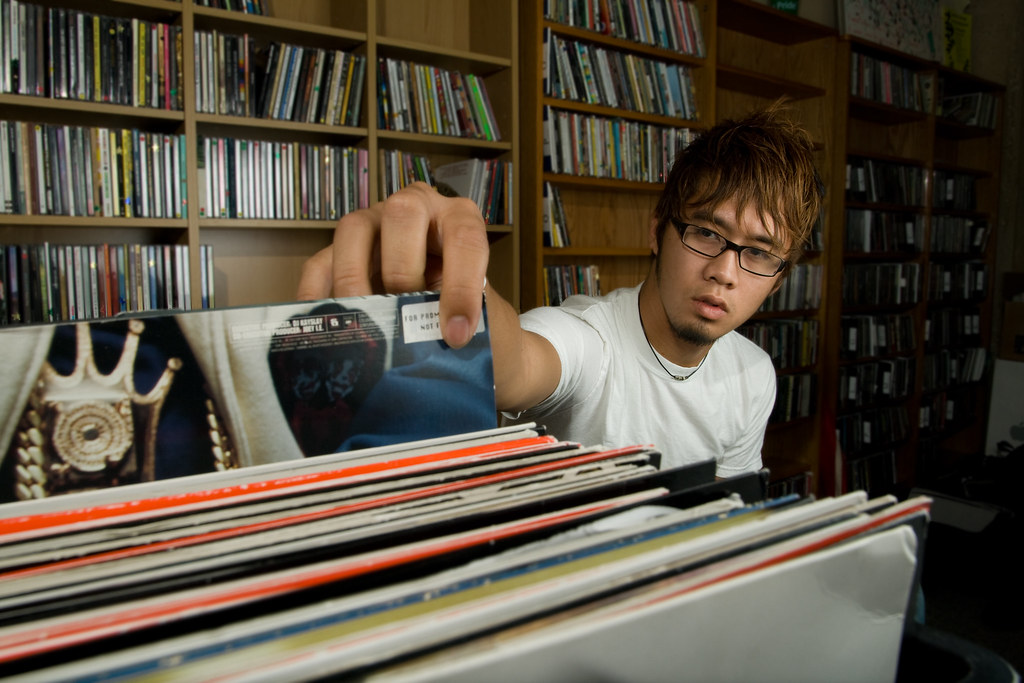
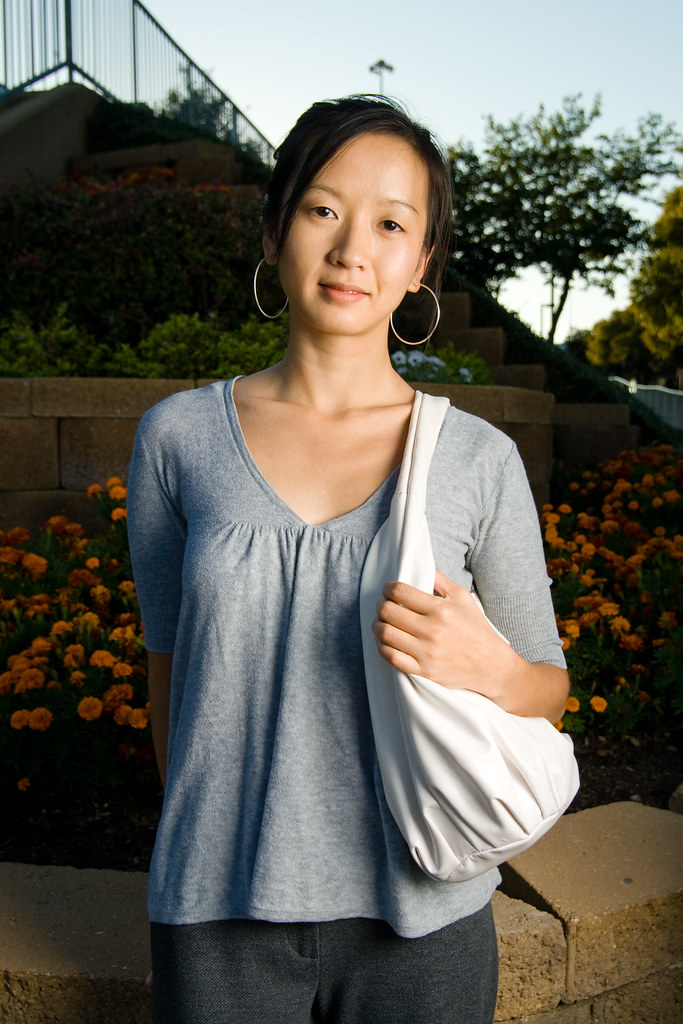 Then, Long randomly asked strangers to allow us to take pictures of them, hehe.
Then, Long randomly asked strangers to allow us to take pictures of them, hehe.
http://www.flickr.com/photos/hubertduong/ for more.

Selecting an album
 Then, Long randomly asked strangers to allow us to take pictures of them, hehe.
Then, Long randomly asked strangers to allow us to take pictures of them, hehe.http://www.flickr.com/photos/hubertduong/ for more.
Saturday, October 18, 2008
One-to-One Open Sessions
I'm allowing ten to fifteen minutes of one-to-one, personal, open session discussions/demonstrations every Tuesday and Thursday mornings starting at 9:30 AM. I will also have time before noon on every Monday. I can help answer any questions you may have, or if you are just starting out photography I can bring you up to speed so you can start taking photos like the ones on this site. I can tell you things about our shoots, equipment, techniques, thought processes, etc during these discussions.
Email me at lpn071000@utdallas.edu to schedule ahead of time and we can meet somewhere on campus.
Email me at lpn071000@utdallas.edu to schedule ahead of time and we can meet somewhere on campus.
Friday, October 17, 2008
Photo Shoot from Oct 17
Check out radio.utdallas.edu
Video will display full resolution when viewed on Firefox. IE cuts off the right portion of the video.
Best times to find Models on campus
When searching for people to apply your lighting and posing skills, look into times between classes, particulary the 50 minute classes. People are more likely to have free time during that period so it is okay to ask for a couple of minutes of their time.
You may try to get people during changing periods but they are more likely to be moving to their next class or heading home. We don't want the models to have a hurrying mentality when photographing them because they have a schedule to stick to which causes less than optimal subject-photographer interaction. Also, when in these changing periods there is a mass crowd which can get in the way of your setup; it makes it difficult to maintain safety for ourselves, the models, and our equipment as people can run into our photographic location.
When students/faculty are outside during the middle of classes, it probably means that they have free time. They are perhaps on break, arrived early on campus, or waiting for another class. All which indicates that they have some free time.
For example, when classes start at 10:00 AM, the best time to look for models is around 9:30 AM. There are people walking by, probably with nothing to do, that would love to have their pictures taken (on a professional level. Hey, that's what we do).
As time nears changing period there will be an increase in crowd population, and people will have to start heading to their next classes. Chances of finding a model are less likely.
You may try to get people during changing periods but they are more likely to be moving to their next class or heading home. We don't want the models to have a hurrying mentality when photographing them because they have a schedule to stick to which causes less than optimal subject-photographer interaction. Also, when in these changing periods there is a mass crowd which can get in the way of your setup; it makes it difficult to maintain safety for ourselves, the models, and our equipment as people can run into our photographic location.
When students/faculty are outside during the middle of classes, it probably means that they have free time. They are perhaps on break, arrived early on campus, or waiting for another class. All which indicates that they have some free time.
For example, when classes start at 10:00 AM, the best time to look for models is around 9:30 AM. There are people walking by, probably with nothing to do, that would love to have their pictures taken (on a professional level. Hey, that's what we do).
As time nears changing period there will be an increase in crowd population, and people will have to start heading to their next classes. Chances of finding a model are less likely.
Sunday, October 12, 2008
Photos from October 12th
Here are some photographs from my camera:
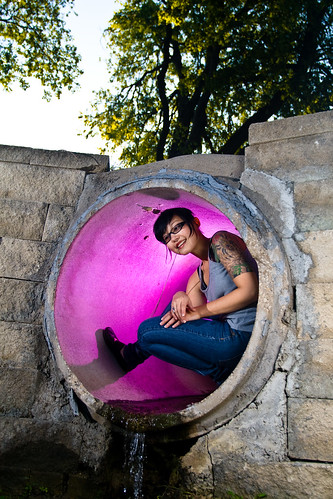
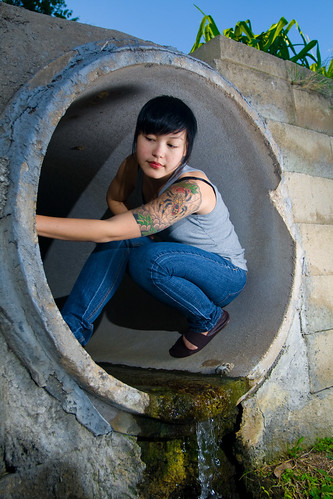
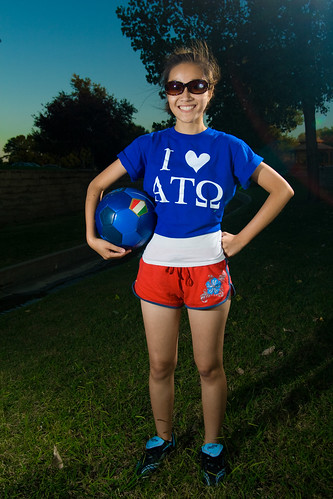


So she decided to climb into that hole like I suggest, hehe.


And here's Anny who was around so I decided to photograph her. More of my pictures at http://flickr.com/photos/hubertduong/

Saturday, October 11, 2008
Tuesday, October 7, 2008
Next Photo Shoot
Another photo shoot Friday at 5:00 PM.
Location to be determined but definitely on campus.
update: initial meet at Green building, at doors facing Spirit Rock
Hoping to get a camera man to make a video of our shoot. Time to start impressing the world outside of UTD.
Anyone is welcome to join, just call 214 718 2387 or email @ lpn07100@utdallas.edu.
Location to be determined but definitely on campus.
update: initial meet at Green building, at doors facing Spirit Rock
Hoping to get a camera man to make a video of our shoot. Time to start impressing the world outside of UTD.
Anyone is welcome to join, just call 214 718 2387 or email @ lpn07100@utdallas.edu.
Sunday, October 5, 2008
Photoshoot from Friday, October 3rd
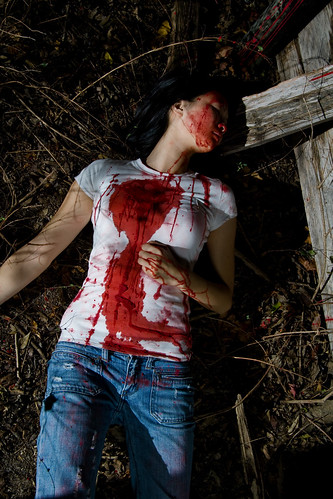
Photo by Long Nguyen
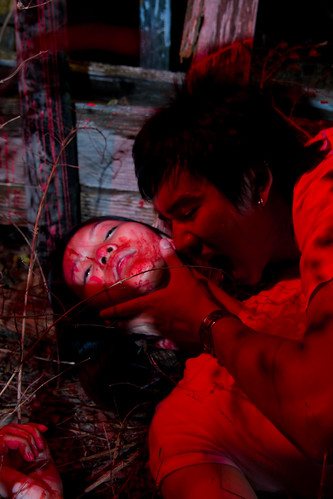
Photo by Long Nguyen

Photo by Hubert Duong
In honor of Halloween, we decided to do some bloody pictures. The fake blood was pretty much made up on the fly so maybe next time we can make more realistic looking blood. =) Long, Annie (our friend/model), and I went out to Spring Creek Preserve at night. Unfortunately, we forgot to bring a flash light for our cameras to focus on our subject, but luckily Annie has a bright phone. =) More pictures at: http://flickr.com/photos/hubertduong/
Friday, October 3, 2008
Thursday, October 2, 2008
Know your flash sync speed
Be careful not to use shutter speeds higher than what your camera can handle when using flash.
 For example, when shooting this image at 1/1000, the shutter mechanism shut out a part of the frame leaving only the bottom half lit.
For example, when shooting this image at 1/1000, the shutter mechanism shut out a part of the frame leaving only the bottom half lit.
Most cameras have a upper limit of 1/250th. Plan your shots accordingly when you're limited to this max shutter speed.
 For example, when shooting this image at 1/1000, the shutter mechanism shut out a part of the frame leaving only the bottom half lit.
For example, when shooting this image at 1/1000, the shutter mechanism shut out a part of the frame leaving only the bottom half lit.Most cameras have a upper limit of 1/250th. Plan your shots accordingly when you're limited to this max shutter speed.
Wednesday, October 1, 2008
Lead up to our next shoot
In discussion with comrade Hubert about a Halloween type shoot in the near future,
Hubert: hm, i was thinking sometime at night so we can get some scary looking pics in the darkness. There's a forest-like park nearby [my friend's] house. We could even do it both times?
Long: Not too in the dark, I'm afraid there may not be enough BG light to help separate subject from BG.
In fact, if we wanted a dark, low-key image we can simulate that indoors with indoor lighting. Say we are working in a hallway with florescent lighting throughout the ceiling, ON. A setting like 1/250th and f11 should kill the ambient light, leaving just flash to work with. With indoors, we can use gels with 100% effect. I mention gels because when I think of these kinds of shoots, I think red background (Or whatever color which may help emphasize the subject). Doing it indoors helps bring out the red effect because there is no ambient light outside contaminating the colored lights.
If doing it outside, I hope that there is outdoor lighting to let burn in the image. Otherwise, my idea of a park, like you mentioned, would turn our photos into something very similar to a studio shot where we just have a lit subject in front of a black backdrop.
I'll have to browse the flickr site for night lit portraits to get some inspiration. Remember the fish building shoot?
Okay, to answer your original question. I'll have to think about whether or not I can do both times on Friday. I'll get back to you on that.
Oh btw Hubert, I posted on the radio popper blog update (from sept 10) that they need to give an update on their product. You should comment on their thread too so they know what we want.
Hubert: hm, i was thinking sometime at night so we can get some scary looking pics in the darkness. There's a forest-like park nearby [my friend's] house. We could even do it both times?
Long: Not too in the dark, I'm afraid there may not be enough BG light to help separate subject from BG.
In fact, if we wanted a dark, low-key image we can simulate that indoors with indoor lighting. Say we are working in a hallway with florescent lighting throughout the ceiling, ON. A setting like 1/250th and f11 should kill the ambient light, leaving just flash to work with. With indoors, we can use gels with 100% effect. I mention gels because when I think of these kinds of shoots, I think red background (Or whatever color which may help emphasize the subject). Doing it indoors helps bring out the red effect because there is no ambient light outside contaminating the colored lights.
If doing it outside, I hope that there is outdoor lighting to let burn in the image. Otherwise, my idea of a park, like you mentioned, would turn our photos into something very similar to a studio shot where we just have a lit subject in front of a black backdrop.
I'll have to browse the flickr site for night lit portraits to get some inspiration. Remember the fish building shoot?
Okay, to answer your original question. I'll have to think about whether or not I can do both times on Friday. I'll get back to you on that.
Oh btw Hubert, I posted on the radio popper blog update (from sept 10) that they need to give an update on their product. You should comment on their thread too so they know what we want.
Subscribe to:
Posts (Atom)





